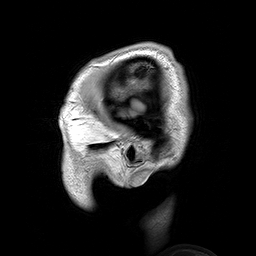The psychologist Raymond Gibbs (2006) in Embodiment and Cognitive Science asks (pg. 28) “What underlies people’s abilities to move as they do and have any awareness of their bodies?”
The conventional answer given by psychology, medicine, and cognitive neuroscience is physiological and cognitive systems using information-processing. Gibbs cites the work of Bermudez, Marcel, and Eilan (1995) who list a series of multiple internal physiological information sources that enable motor activity and somatic perception (pg. 13):
“(a) Information about pressure, temperature, and friction from receptors on the skin and beneath the surface.
(b) Information about the relative state of body signals from receptors in the joints, some sensitive to static position, some to dynamic information.
(c) Information about balance and posture from the vestibular system in the inner ear and the head/trunk dispositional system and information from pressure on any parts of the body that might be in contact with gravity-resisting surfaces.
(d) Information from skin stretch and bodily disposition and volume.
(e) Information from receptors in the internal organs about nutritional and other states relevant to homeostasis and well-being.
(f) Information about effort and muscular fatigue from muscles.
(g) Information about general fatigue from cerebral systems sensitive to blood composition”
These formulations follow the contemporary scientific trend of explaining systems, processes, entities, and relationships in terms of computation and information (and, often enough, representation). It is relatively rare in such contexts to encounter authors worrying overmuch about the meaning of the term “information” though there are attempts to effectively operationally define it via metrics, i.e. to quantify the information content of a system via Shannon-style or other measurements (Gardner, 1985). Perhaps “information” is indispensable as a term of convenience, but a critical reader should ask what the term means in context, when the term is used as a heuristic, what value the term adds, whether ambiguity is lessened or increased, and whether it would be better to emphasize the provisionality of information concepts.
Probably it would be better to refer to “information” much of the time, but this becomes stylistically cumbersome very quickly.
In any event, current theories of psychophysiological processing, clinical studies of symptom-perception accuracy, cognitive models using mechanisms explaining explicit, verbally-stateable knowledge, and other theories conceptualize our knowledge of our bodies in terms of information-processing, though the connection between “knowledge” and “information” is often not explicit.
How are we to understand the meaning(s) of the term “information” used to explain how and how well people know their own mental and physiological states? What is the relationship of “information” in the sense of physiological or biological systems to consciously reportable sensation, such that a person is getting information about their body state? Are there many kinds of “information” involved in these models of internal state perception or “body cognition” found in clinical neurology, medicine, experimental psychology, and theoretical cognitive neuroscience? Or is there but one type of “information”, with different qualities or aspects that are described or measured in different ways? What metrics or formalisms are most appropriate for each type?
Information-processing, computational, cognitivist, and representational formulations may privilege objective “system-centric” meaning of information, performing an implicit reduction of information in an experiential/phenomenological sense, without calling attention to the reduction. It may be useful, or even true, that quantities can be mapped on to qualities, following the accepted principle in philosophy of science that the ontology (known elements, entities, processes, features, properties and their relations) from one domain can be reduced to that of another domain, with properties from the one domain or level of scientific description to more fundamental explanatory ones in another domain (Churchland, 1989). In this view, the mechanistic and reductionistic work that the ontology of genes and DNA (and possibly information-processing theory) does in explaining cell biology will hold for the relationship between brain and cognition. Indeed, a standard view in psychology and neuroscience (and to an extent philosophy of mind) holds that concepts from cognitive neuroscience, computer science, and information-processing theory can mechanistically explain particular aspects of bodily awareness, and at some point law like or nomological generalizations will become apparent, effectively performing a reduction.
I maintain that we should be careful in using an overdetermined term such as “information” to prematurely unite concepts from different domains. Traditionally, the philosophy of science has had a role in calling attention to instances where the use of concepts from one domain are used to explain another without careful explication of the move that is made (what one might call “stealing a base”), but unfortunately, the specialized nomenclature of philosophy leaves some scientists and clinicians alienated from such discourse.
Stretch your imagination, take the long view, remember Thomas Kuhn: do you think people in 100 years will be explaining body-knowledge as an information-processing system?

